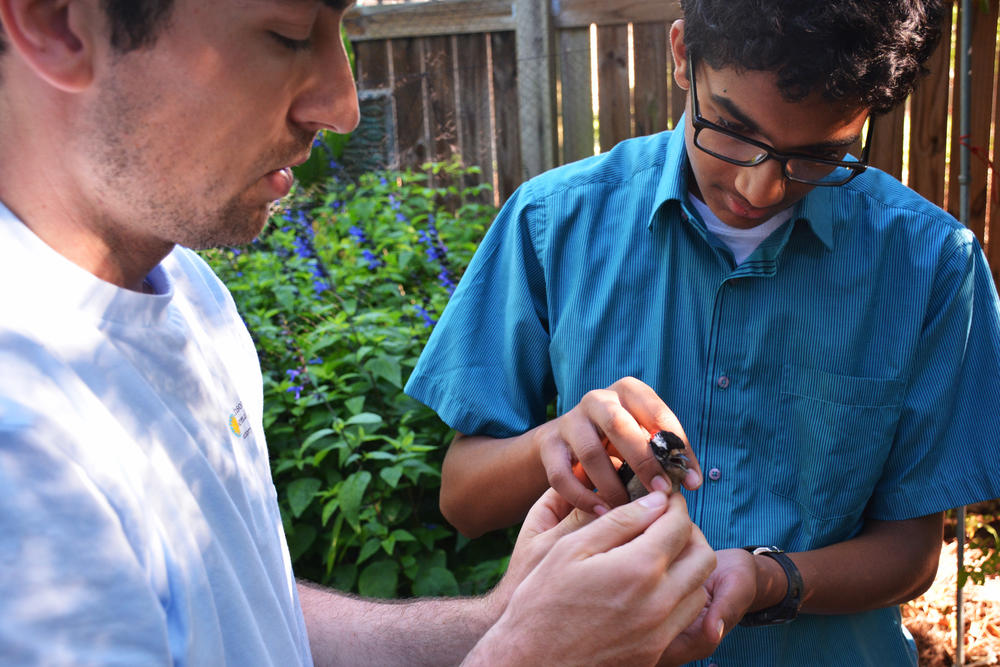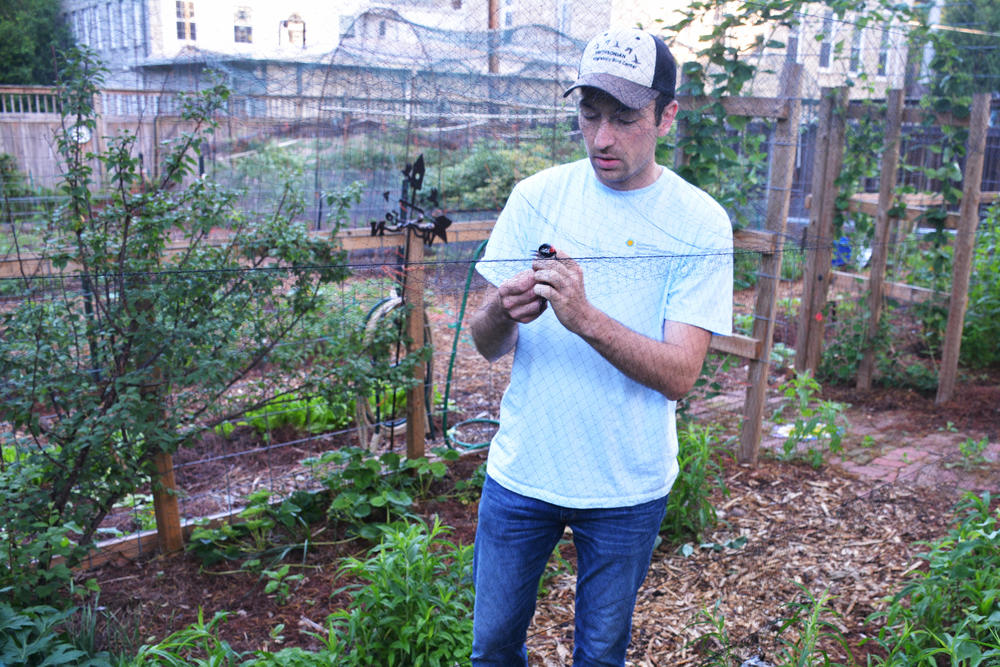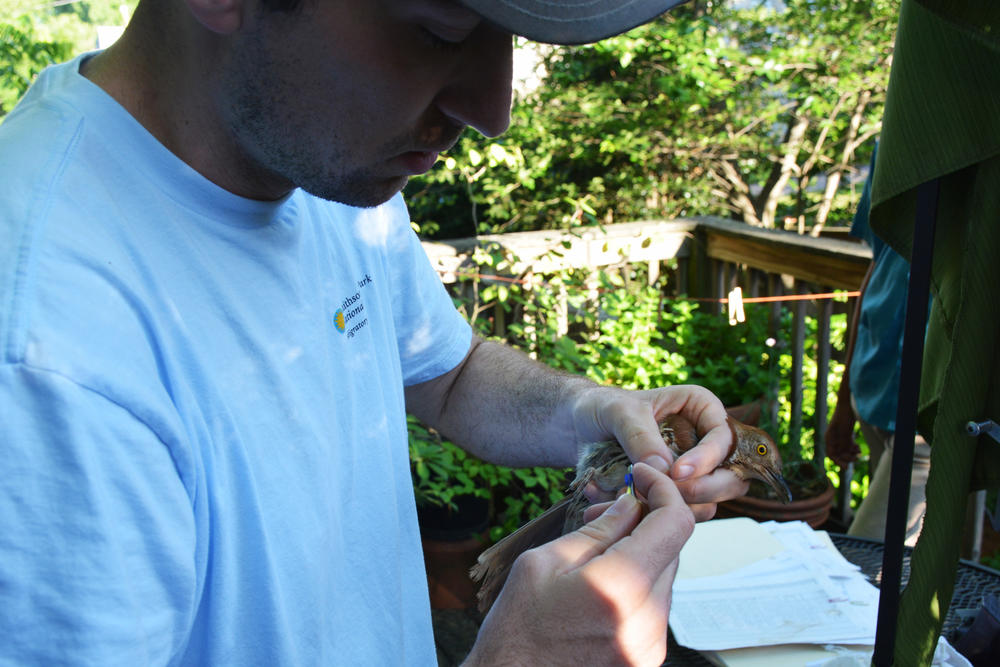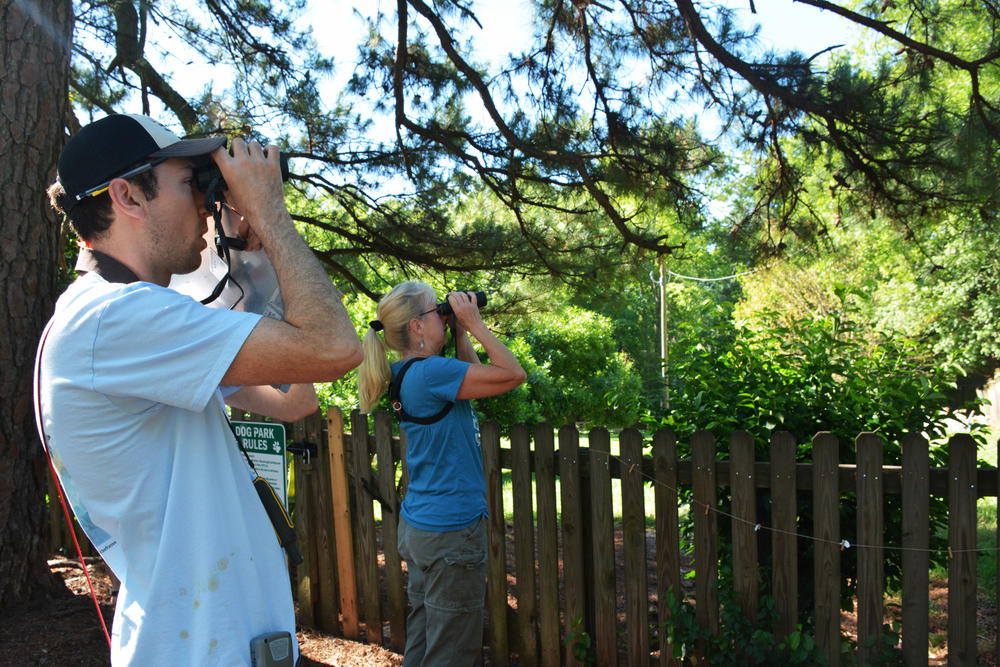Section Branding
Header Content
Bag 'Em And Tag 'Em: Smithsonian Puts Atlanta Birders To Work
Primary Content
On a recent Sunday morning just after dawn in a lush backyard in Atlanta, Clay Graham stood silent, all eyes and ears.
“Ok, so that’s a Carolina wren calling about ten meters out,” he said. “A cardinal just chipped maybe 20 to 30 meters away.”
In the soft light, he scribbled down the names and positions of the birds he observed. If he could see or hear them, he could catch them.
Graham is a scientist with the Smithsonian’s Migratory Bird Center and part of Neighborhood Nestwatch, a kind of bird-census.
Each spring, the program turns backyards all across metro Atlanta into living laboratories and uses data gathered by an army of regular people to study how human development impacts birds.
Graham is on the lookout for ten different bird species. They form a kind of representative sample that gives the Smithsonian a good sense of the health of the entire bird population.
Soon after he unfurled a series of nearly-invisible nets he’d strung around the yard, Graham had something: a gray catbird, which cried out as he extracted it by hand from the thin nylon.
Graham placed the catbird in a cotton bag and hung it from a section of clothesline, giving it time to calm down before being processed.
“Let’s do red on the left...red over aluminum on the left and then red on the right,” Graham called out to a colleague a few minutes later.
If Graham catches a bird from one of the focal species, he attaches a set of color bands to each leg. He also conducts a quick exam, recording things like age, sex, and weight.
Then, Graham releases the banded birds or passes them to someone nearby to do the honors.
“When you let them go, there’s a second that you have this wild bird in your hand, which is really wonderful,” said Joy Carter.
She stood watching Graham band birds as she recalled the many she’d helped release. Carter’s one of the 1,500 or so volunteers around the country who participate in the nestwatch program.
Once a year, they give up their backyards to Smithsonian scientists to catch and band birds. The rest of the time, they watch their birdfeeders like hawks.
“You sit there, and you see these birds, and you think: ‘Is that the same male cardinal that I saw yesterday?’” Carter said. “Well, when they band them, you know.”
Volunteers use an online portal to report the banded birds they spot back to the Smithsonian. They also monitor their yards for nests and how they fare.
Carter said the program enhances her backyard birding experience. But she’s also doing real, valuable work.
“This is absolutely science. This is hard data that we’re collecting, and it’s so we can monitor these bird populations,” said Jessy Nuckolls, who’d come out to help Graham band birds.
She works with the Fernbank Museum of Natural History in Atlanta. It’s the Smithsonian’s local partner for the nestwatch program.
Nuckolls is a big fan of citizen science projects. They give researchers huge data sets, and they’re a great way to teach the public about conservation.
“People tend to be a little more self aware and a little bit more observant the more they know and the more they’re able to learn,” she said.
“That’s sort of an unspoken benefit that occurs when people go through this experience,” said Pete Marra, head of the Smithsonian’s Migratory Bird Center.
He founded Neighborhood Nestwatch in Washington D.C. back in 2000. In the time since, the program’s expanded to seven cities around the country and has given his team loads of data to work with.
“And what we’ve shown is that the data collected by citizens is as good as the data collected by Smithsonian scientists,” Marra said.
That data’s led to studies on the link between birds and the West Nile virus and on the negative effects of human development on bird populations. Marra said all the research points to one big conclusion.
“We need to value birds,” he said. “Birds are these really critical indicators of environmental health, an environment that we also depend on as humans.”
That message isn’t lost on Rajesh Venkateswaran. He’s a friend of Joy Carter’s who brought his son out to her backyard to watch the bird banding in action.
“Most of the kids these days are just on their phones playing video games or watching TV,” he said. “It’s very important that we take them out and make them appreciate nature.”
Venkateswaran said he thought he’d have to drive hours outside the city to teach his son that kind of lesson. He loves that he was able find it in a friend’s backyard.





